
Well above average temperatures will prevail across the Plains and the West Coast this week, while a cold front will bring Arctic air to the South and East Coast Thursday and Friday. Lake effect snow is forecast downwind of the Great Lakes through Thursday along and behind the Arctic front, as well as mountain snow across the Southern Appalachians. Read More >
October 16th, 2019: Large Waves, High Winds, and Beach Erosion
|
|
| A view of an angry Lake Michigan taken in South Haven on October 16th, 2019. Waves as large as 11.8 feet were measured by a buoy offshore of South Haven. |
On Wednesday, October 16th, 2019, a storm system brought high winds and large waves to the West Michigan lakeshore. Wind gusts topped 50 mph and waves grew to more than 10 feet in height, downing trees along the lakeshore and causing significant beach and sand dune erosion. In the hardest hit areas, 10 to 20 feet of dune bluff was eroded in a 12 hour period due to the combination of near-record Lake Michigan water levels, a 1-foot "surge" water rise, and large waves. Additionally, water due to waves crashing onshore as well as water pushed back into river channels flooded roads, parks, and parking lots - especially in Muskegon, Saugatuck, and South Haven.
This was the largest and most destructive storm we've experienced with Lake Michigan water levels at near-record water levels so far this fall. With Lake Michigan water levels expected to remain high at least through the beginning of 2020, the risk of continued erosion will remain for the foreseeable future.
Large Waves:
Large waves developed on Lake Michigan within long northwesterly fetch. The biggest waves channeled into a zone from Holland to South Haven where buoys measured peak wave heights over 10 feet.
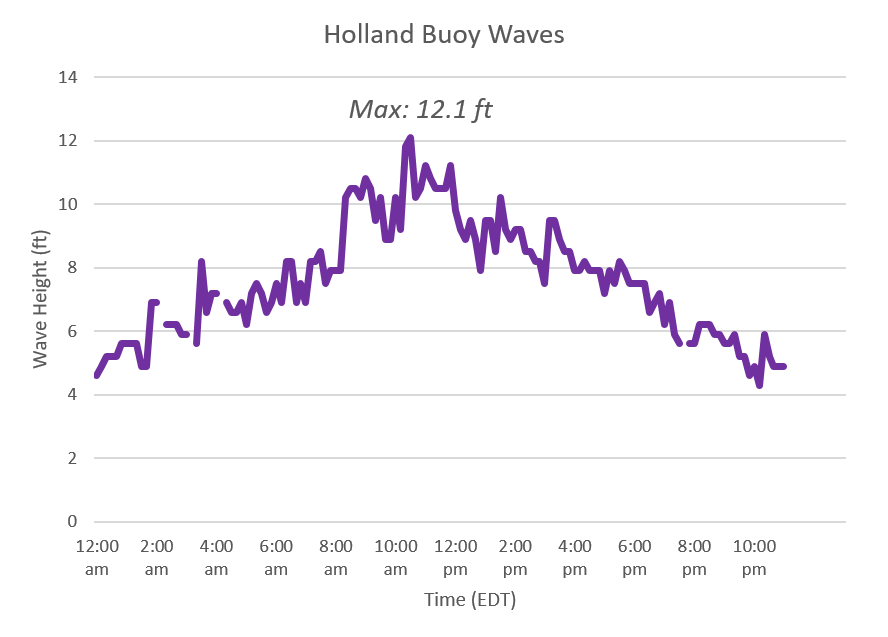 |
| Time series of wave heights measured by the buoy near Holland, Michigan on October 16th, 2019. The largest wave height measured was 12.1 feet at approximately 11:50 AM EDT. |
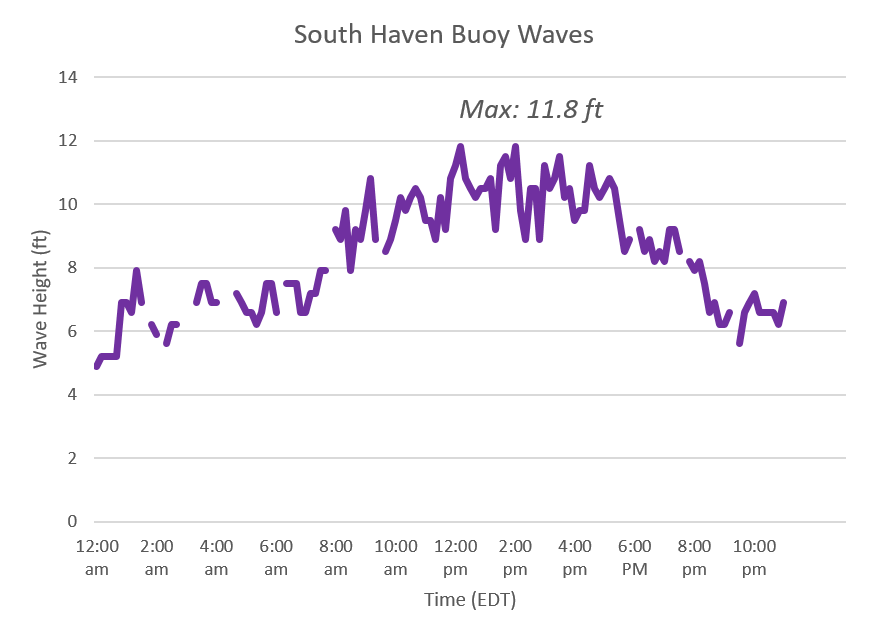 |
| Time series of wave heights measured by the buoy near South Haven, Michigan on October 16th, 2019. The largest wave height measured was 11.8 feet at 12:10, 2:00, and 3:00 PM EDT. |
The large waves were only one factor that led to the significant beach and sand dune erosion. The sustained strong winds led to a "surge" of water into the eastern half of Lake Michigan, with a 1 foot non-wave water rise measured in Holland! This type of water rise is similar to a storm surge in a hurricane, where winds literally push water toward land.
 |
| Time series of observed water levels measured in Holland, Michigan on October 16th, 2019. The gauge is located on the southern side of Holland State Park beach within the break water piers. |
Not to be forgotten, the average water level on Lake Michigan was roughly 2.6 feet (~31 inches) above normal which is near-record level. Taken altogether, the conditions on Lake Michigan led to significant beach and bluff erosion.
High Winds:
Winds increased dramatically around sunrise across Lake Michigan and western Lower Michigan. The strongest winds were confined to the lakeshore where gusts over 50 mph were common from Ludington to South Haven. The strongest measured wind gust was 58 MPH at Grand Haven, though there were several unofficial reports of wind gusts in excess of 60 mph between Muskegon and Holland. The strength of the winds downed tree limbs - and in a few cases whole trees - leading to power outages along the lakeshore.
Here is a list of measured wind gusts from trusted sources:
...SELECTED HIGHEST WIND REPORTS... Location Speed Grand Haven Lighthouse 58 MPH Muskegon Lighthouse 57 MPH Whitehall 53 MPH Saugatuck Pier 53 MPH South Haven 51 MPH Holland Harbor 49 MPH 3 WNW Roosevelt Park 49 MPH St. Joseph Pier 46 MPH 3 W Port Sheldon 45 MPH 38 E Wind Point 45 MPH Holland Airport 41 MPH Oceana County Airport 40 MPH Ludington 40 MPH South Haven Airport 35 MPH Ferrysburg 35 MPH Observations are collected from a variety of sources with varying equipment and exposures. We thank all volunteer weather observers for their dedication. Not all data listed are considered official. |
Lakeshore Erosion and Flooding:
Significant beach and sand dune erosion occurred due to the large waves, near-record high Lake Michigan water levels, and a wind-driven surge of water. In the hardest hit areas, 10 to 20 feet of dune bluff was eroded in just 12 hours with unofficial reports of up to 30 feet removed before waves subsided. Some places measured erosion in "inches per hour." We have not seen such significant erosion since Lake Michigan water levels were at record levels in 1986.
NWS Grand Rapids sent staff to survey the beach and sand dune erosion as it was happening. A few pictures taken by the survey crew are shown below.
(click on any image to enlarge)
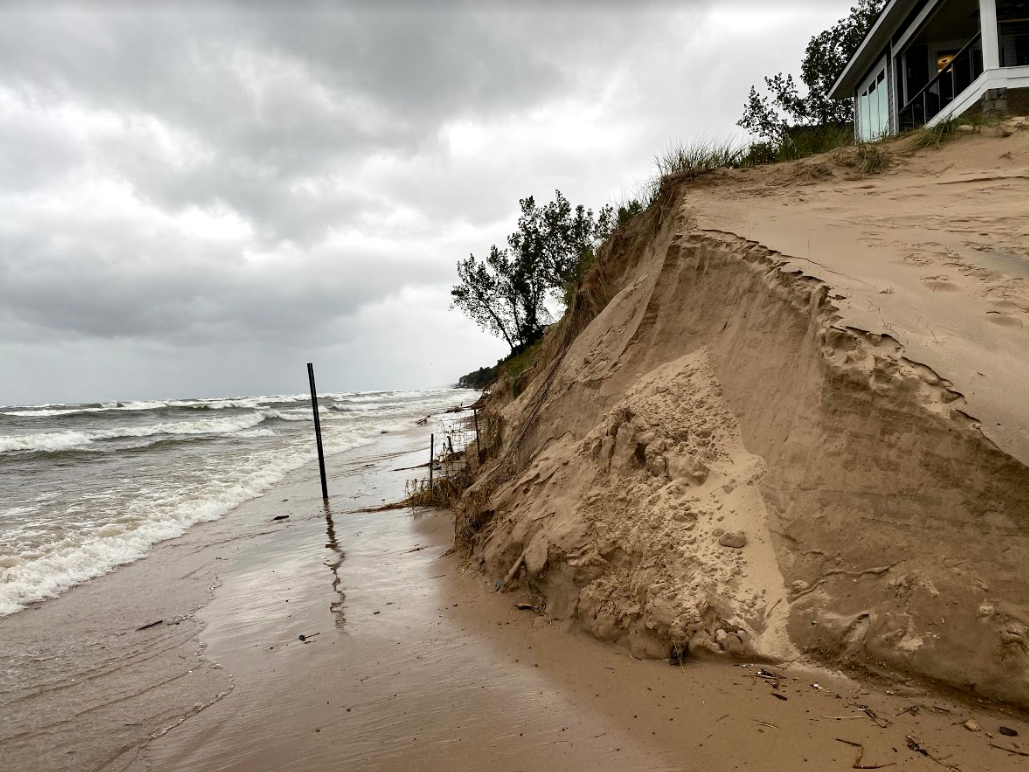 |
 |
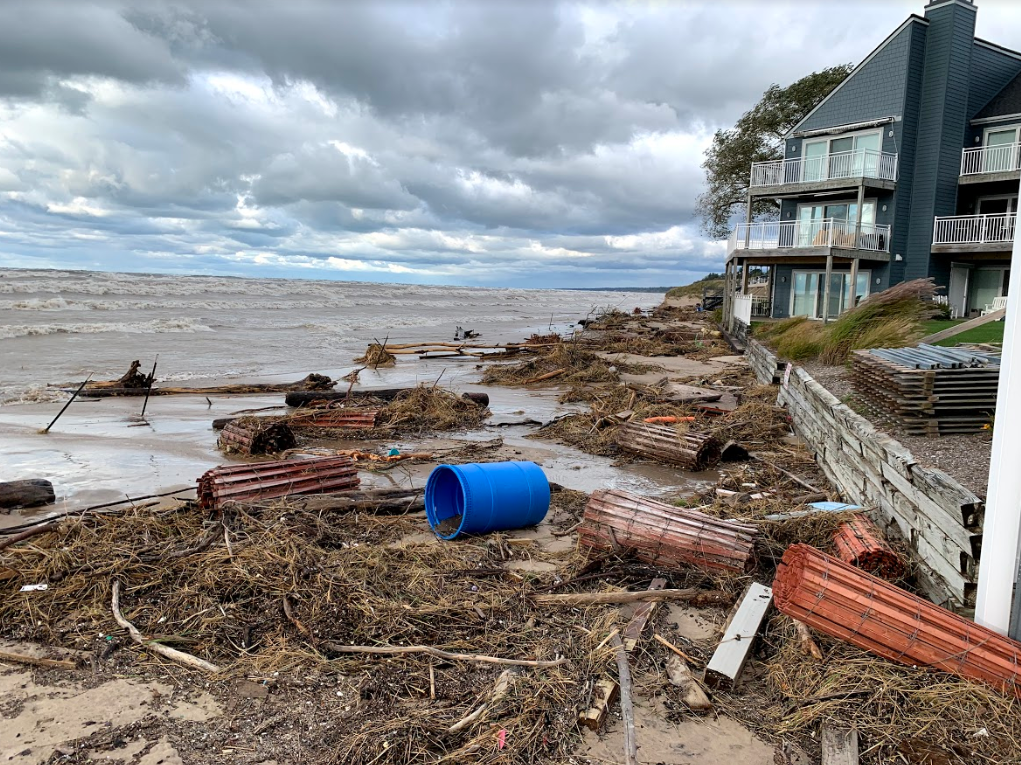 |
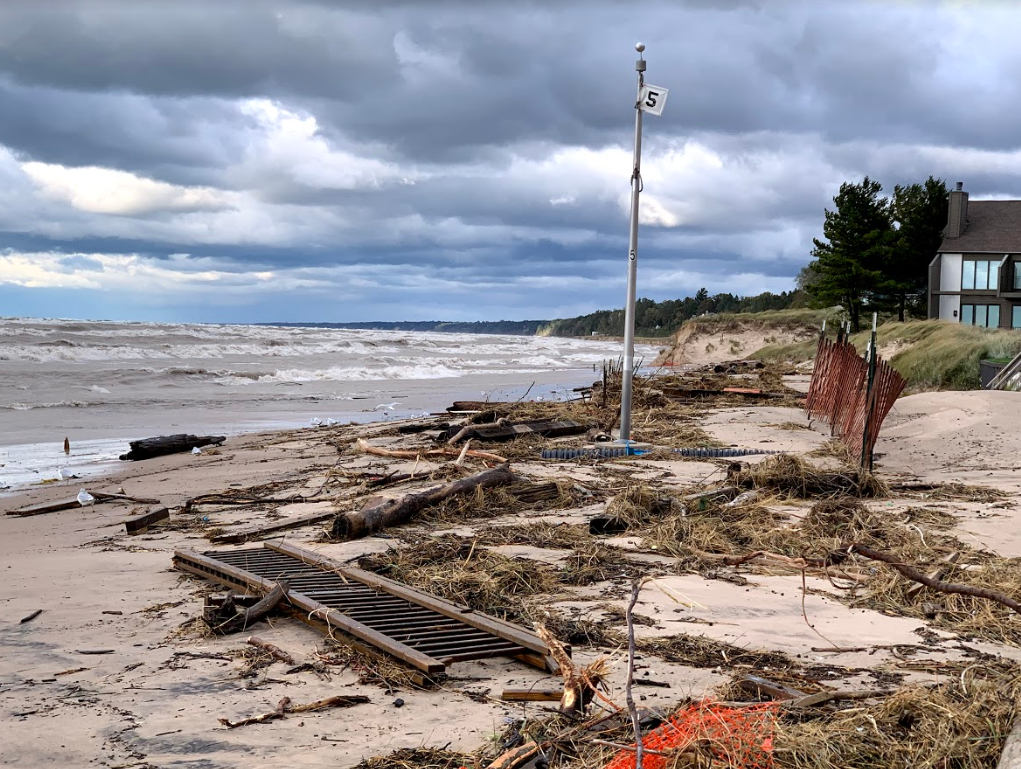 |
| Dune erosion at North Beach Park in Grand Haven (NWS Survey) | Dune erosion at Rosy Mound Natural Area, south of Grand Haven (NWS Survey) | Significant debris deposited on the beaches in South Haven (NWS Survey) | Significant debris deposited on the beaches in South Haven (NWS Survey) |
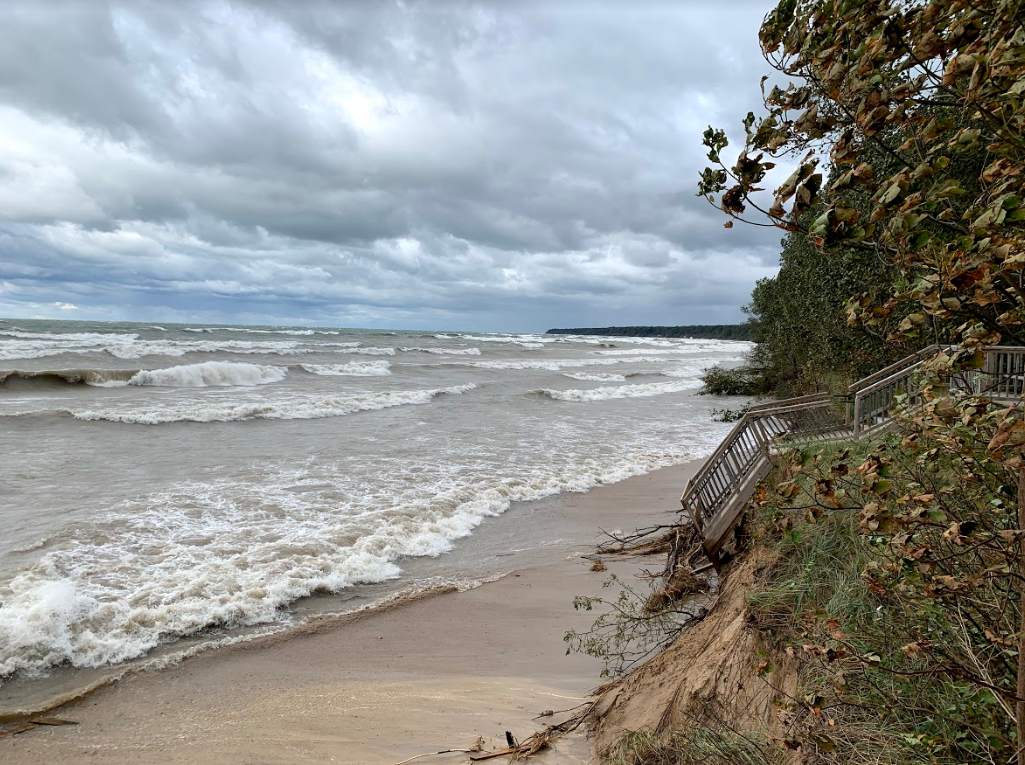 |
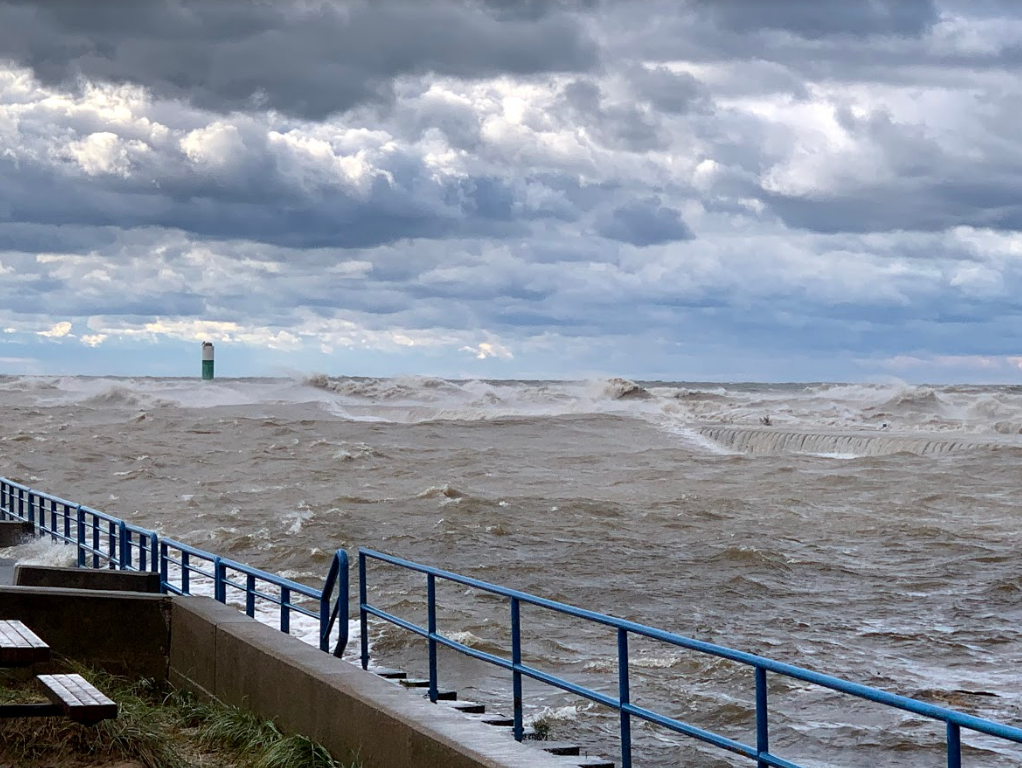 |
.PNG) |
| West Side County Park south of Saugatuck (NWS Survey) | Large waves battering the break walls in South Haven (NWS Survey) | Large waves seen in South Haven (NWS Survey) |
The large waves also flooded parks, roadways, and parking lots along the immediate lakeshore. Water was pushed up river channels especially in South Haven and Saugatuck where several buildings became surrounded by water and roadways flooded over.
(click on any image to enlarge)
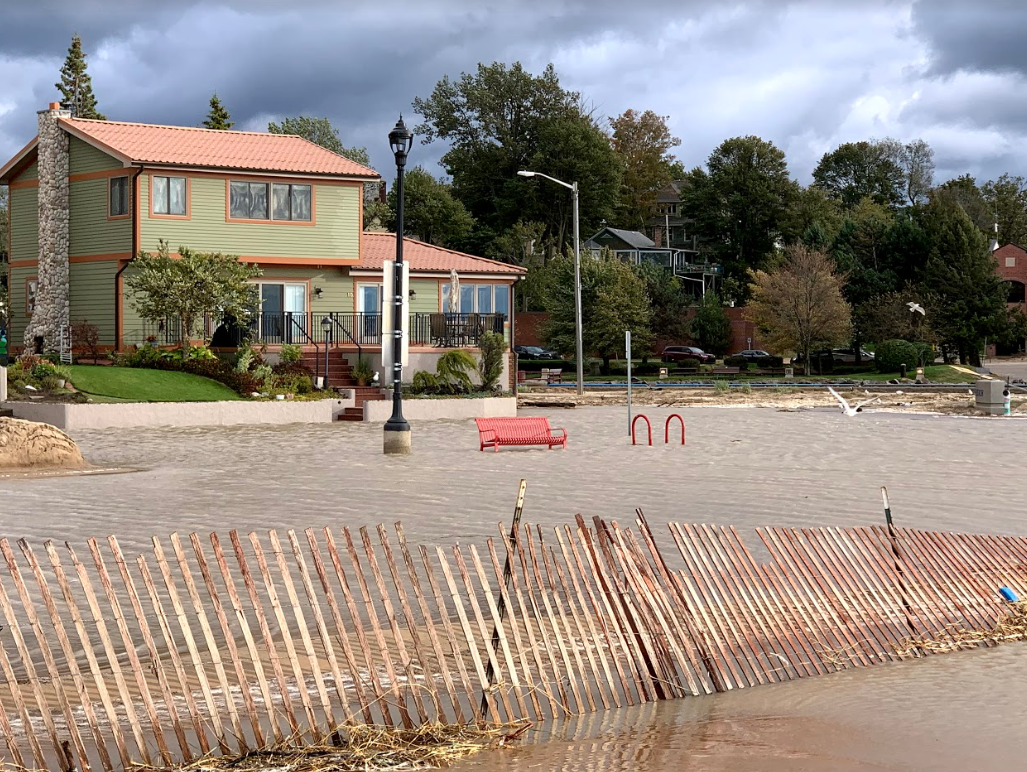 |
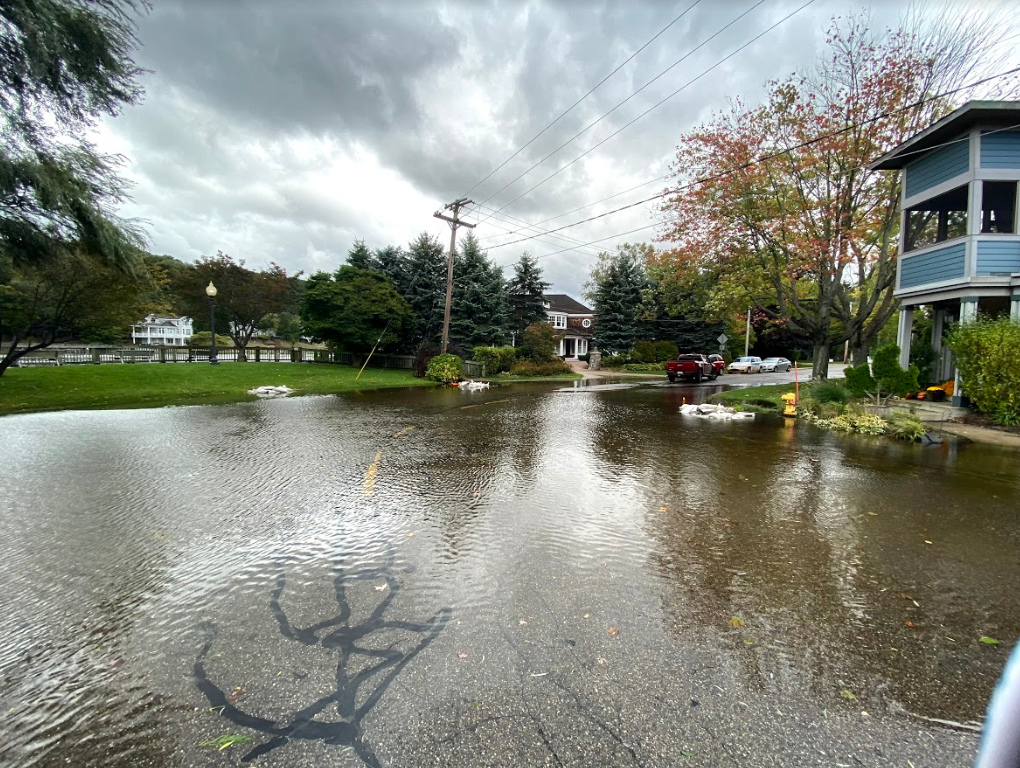 |
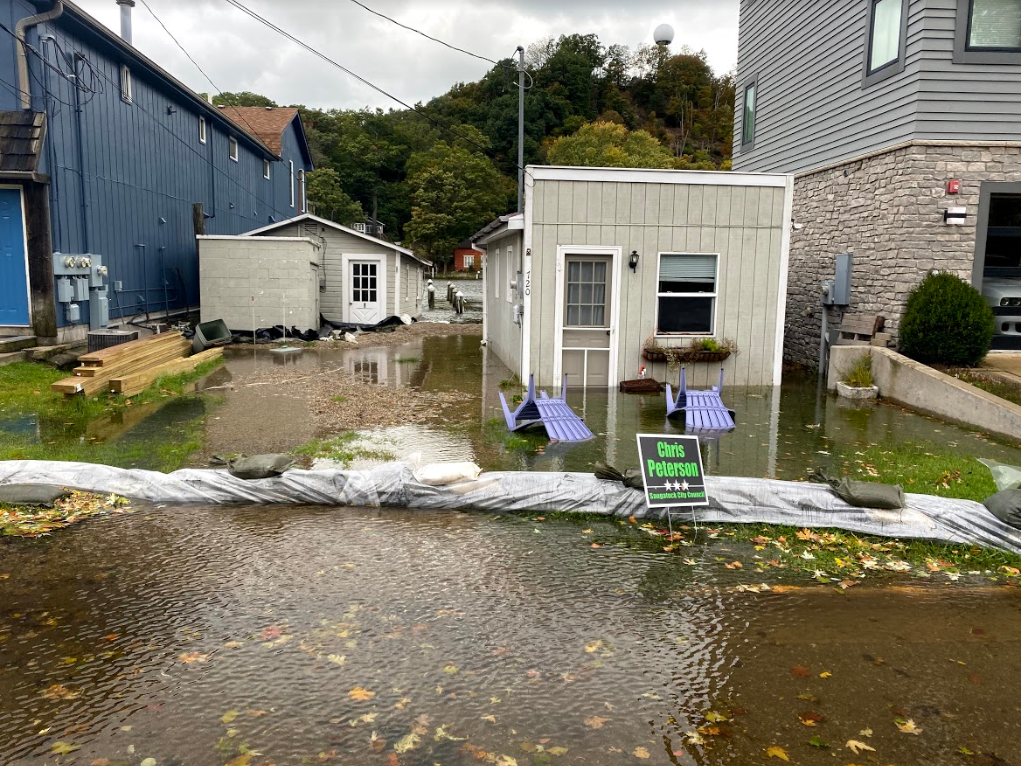 |
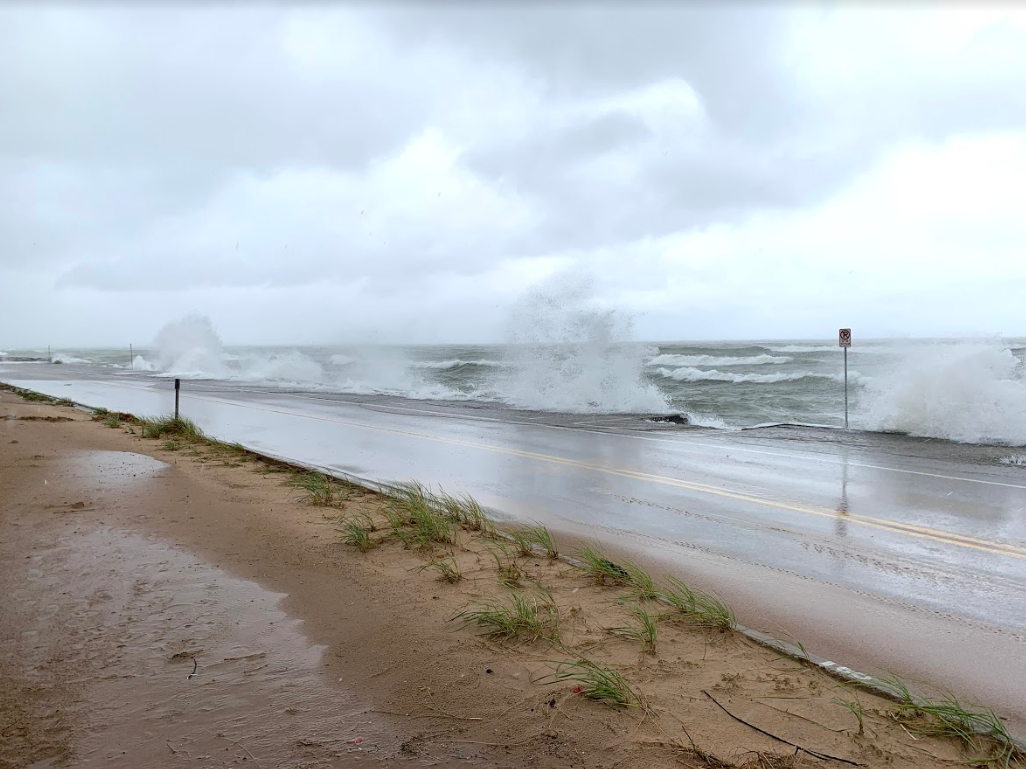 |
| Lakeshore Drive in downtown South Haven flooded by backwater up the Black River (NWS Survey) | Lucy Street in downtown Saugatuck flooded by backwater up the Kalamazoo River (NWS Survey) | Businesses on Water Street in downtown Saugatuck surrounded by backwater pushed up the Kalamazoo River (NWS Survey) | Waves crashing onto Beach Street in Muskegon (NWS Survey) |
The pictures above only hint at the scope of the beach erosion and flooding that occurred along the lakeshore. Many homes along the lake are at risk of damage as waves continue to erode dunes beneath foundations. With Lake Michigan water levels forecast to remain high through at least the winter months, the risk of lakeshore flooding and dune erosion will continue for the foreseeable future.
 |
Media use of NWS Web News Stories is encouraged! Please acknowledge the NWS as the source of any news information accessed from this site. |
 |